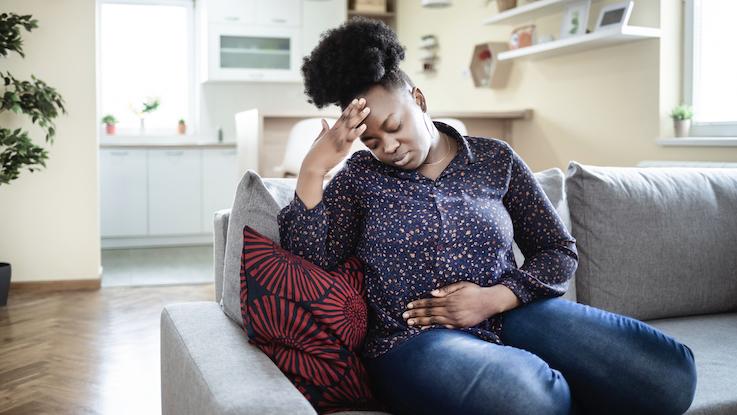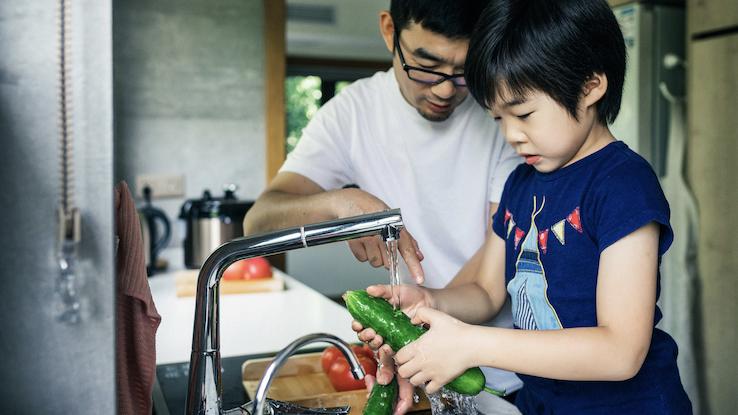
When you’re sick with vomiting and diarrhea, you might wonder: Is it something I ate? Or is it the stomach flu? The illnesses known as the stomach flu and food poisoning can be hard to tell apart. Learn about the causes, symptoms and treatments for these similar conditions.
What Causes Stomach Flu vs. Food Poisoning?

The stomach flu (also called viral gastroenteritis or stomach bug) is caused by viruses that attack your intestines. It actually isn’t a “flu” at all, because it’s not caused by the influenza virus. Several different viruses can cause stomach flu, including norovirus.
Stomach flu is spread through contact with other people, and these viruses spread easily from person to person. You can get stomach flu by:
- Having direct contact with someone who’s sick
- Touching a surface with the virus on it and then touching your mouth
- Eating food or drinking water that has the virus in it
Food poisoning is caused by eating food that has harmful bacteria, viruses or parasites in it — like salmonella or E. coli bacteria. You can get food poisoning by eating food that has spoiled (gone bad) or food that wasn’t washed, handled or cooked properly. Some common sources of food poisoning include:
- Raw or undercooked beef, poultry, shellfish and eggs
- Raw fruits and veggies
- Unpasteurized (raw) milk, cheese and juices
- Deli meats
Norovirus is a common cause of both stomach flu and food poisoning. But the illness this virus causes is only called food poisoning when you get it by eating food with the virus in it.
What Are the Symptoms of Stomach Flu vs. Food Poisoning?

The symptoms of stomach flu and food poisoning are similar, and it can be hard to tell the difference. Both can cause:
- Diarrhea
- Nausea
- Vomiting
- Stomach ache or stomach cramps
- Bloating
- Fever
So how can you tell them apart? If you have muscle aches and a headache, it’s probably stomach flu — those symptoms are less common with food poisoning. Also, symptoms of food poisoning can show up within hours after eating the food. Stomach flu symptoms usually show up one to two days after you get the virus.
What Are the Treatments for Stomach Flu vs. Food Poisoning?

If your symptoms are bad enough that you need to see the doctor, your doctor may take either a stool (poop) sample or a blood sample to find out what’s causing your symptoms. They may also ask you what you’ve eaten recently, whether you’ve been traveling and whether other people have gotten sick at your school or work.
Treatment for stomach flu and food poisoning is similar — both need rest and lots of fluids. Diarrhea and vomiting can cause severe dehydration, so you’ll need to replace lost fluids with water or broth.
Stomach flu usually just has to run its course, but your doctor may prescribe fever reducers and pain relievers. In some cases, severe food poisoning may need treatment with antibiotics to kill dangerous bacteria. Your doctor can find out what’s causing your food poisoning and recommend antibiotics if you need them.
Wash Your Hands to Prevent Stomach Flu

Washing your hands regularly is the best way to prevent stomach flu. Carefully wash your hands with soap and water several times a day. It also helps to avoid sharing food, utensils, dishes, cosmetics or personal care items with other people.
Follow Food Safety Tips to Prevent Food Poisoning

To prevent food poisoning, follow these food safety tips:
- Wash fruits and veggies before cooking.
- Keep your hands, cutting boards, cooking surfaces and utensils clean.
- Cook meat, eggs and seafood to safe cooking temperatures — and keep raw meat, eggs and seafood separate from other foods.
- Keep hot foods hot and cold foods cold — letting hot or cold foods reach room temperature can allow bacteria to grow. Get leftovers into the fridge within two hours.
Resource Links:
- “Food Poisoning” via Mayo Clinic
- “Viral Gastroenteritis” via NIDDK (National Institute of Diabetes and Digestive and Kidney Diseases)
- “4 Steps to Food Safety” via FoodSafety.gov
- “Viral Gastroenteritis” via StatPearls
- “Diagnosis and Management of Foodborne Illness” via American Family Physician





